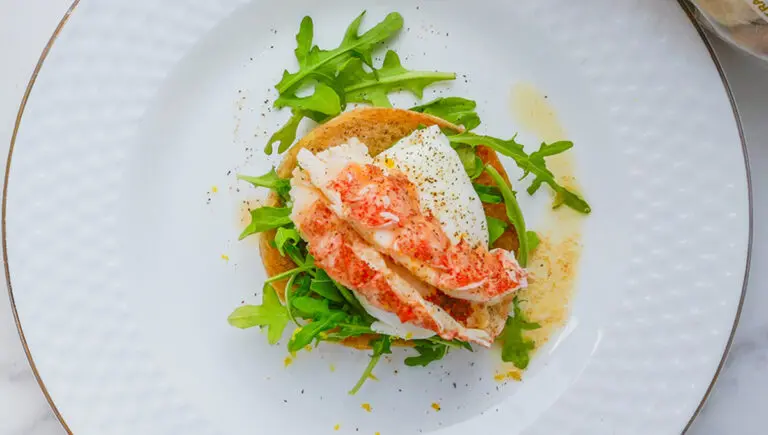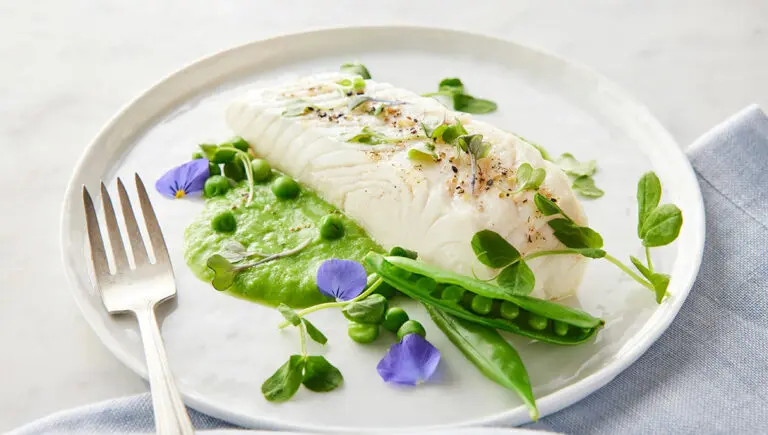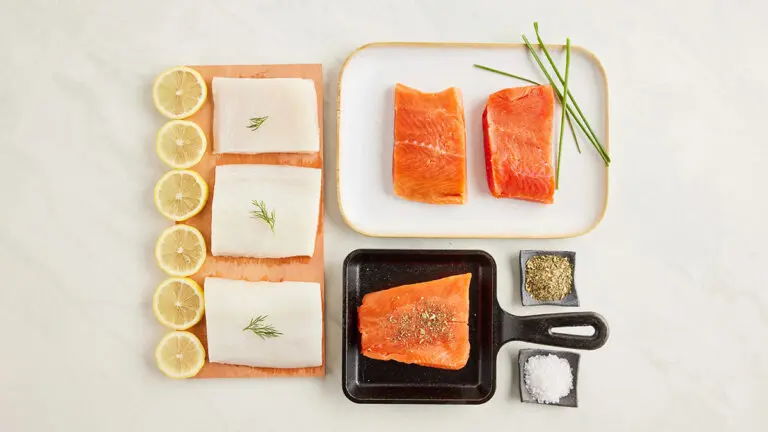Ruby-red and fried sweet-and-sour fish, a staple in Chinese restaurants in the U.S., looks like it must have been invented as American fast food.
In truth, the idea goes back centuries. The dish was a favorite of emperors in the Qing Dynasty (1644–1911), presented so theatrically the fish looked about to jump off the plate.
The fact is sweet-and-sour fish never goes out of style.
Need to feed children a festive dinner? Make things easy and make it sweet.
If you’re brave enough to compete with the local Chinese take-out, why not try a fish main course as indulgent as a dessert for your next Chinese New Year or party? After all, adults love it too. In fact, it’s fisher, forager, hunter, chef Hank Shaw’s favorite recipe in his masterful Hook, Line and Supper.
Beyond the contrapuntal sweet-sour taste, one of the keys to this iconic dish is the texture of the fish: crispy on the outside, moist and tender inside.
And by the way, the bright red color comes from tomato sauce — no dye needed!
Velvet is a Verb
You’ll need a firm white fish, perhaps halibut or Chilean sea bass, or you could use cod bits and pieces.
It’s easiest to cook fish in an air-fryer, but long before those were invented, the Chinese mastered a technique similar to browning in French cuisine. It’s called guo you in Mandarin, or “passing through oil.” If you’ve wondered why the meat or fish in Chinese fried dishes is so moist, this is your answer. In English, cooks call the technique “velveting.”
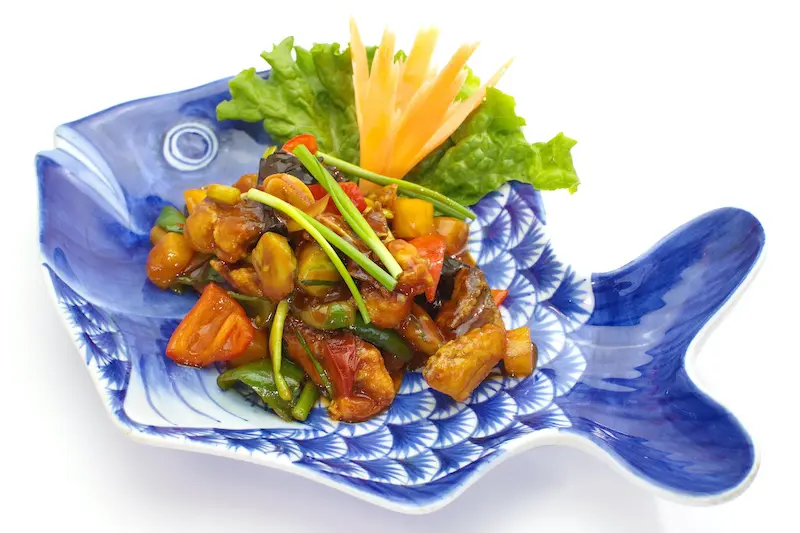
You can velvet shellfish, fish, and other proteins. The first step is to marinate your protein in soy sauce, rice wine, or both, along with cornstarch or potato starch. Shaw’s recipe also includes egg yolks, though some cooks use egg whites. This combination of marinade and light coating will protect the fish from intense heat and prevent it from drying out.
Next, you’ll cook it in a wok or deep-frying pan with the oil at a gentle 140°F (about half the temperature of full frying, which means it’s less likely to sizzle up and burn you).
Don’t overcook. The fish should be about 70 percent done, according to executive chef Liu Ching Hai of Summer Palace at Regent Singapore. Remove the fish and pat dry, or let the oil drain off onto paper towels on a baking sheet.
The last step is to stir-fry the ingredients of your sauce (with a bit of starch), and add the fish back in, stirring to bring the starch up from the bottom. Continue until fish is fully cooked.
If You’d Rather use Less Oil
Water-velveting, or guo shui (passing through water), works too, but not as well, says the chef. In this approach, you blanch the marinated fish in boiling water with a little bit of oil.
Then again, why not invest in an air-fryer? Crispness without soaking in fat is one of its main virtues.
Or, More Oil!
Another option is to deep-fry your fish at full heat after the marinade/coating step. Or go to town and coat your fish, ideally cod, in a full batter. You’ll toss it in the oiled wok with the sweet-sour component added only at the very end.
Sweet and Sour Sauce Secrets
Tomato paste (or ketchup) and vinegar are a basic sweet-sour combo, with cornstarch for thickening and whatever spice or seasoning — maybe ginger, garlic — your diners will tolerate.
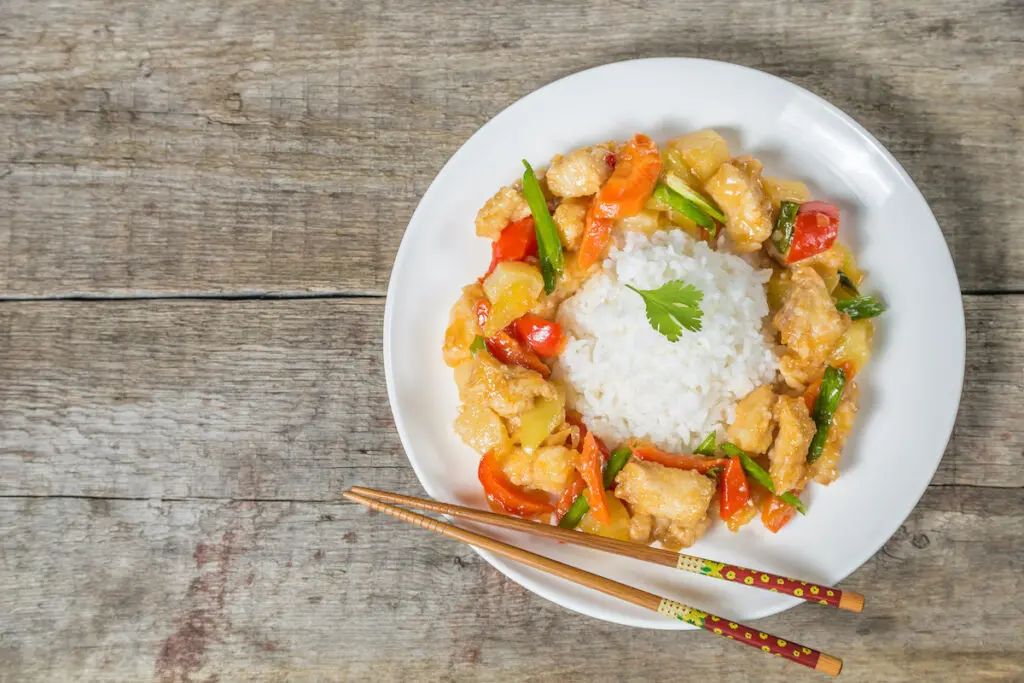
Many recipes include sliced red and green peppers for color and sweetness, or occasionally bite-size chunks of carrot or cucumber. You can also use canned pineapple chunks and juice to make it sweeter. Play around with plum sauce. Or be an adult and use hot chili.
Experiment!
Once you’ve mastered your velveting marinade and cooking approach, you’ll be all set to make any number of Chinese seafood dishes. Consider shrimp in a sweet-and-sour sauce with chilis, ginger, and peanuts. Lightly velvet lobster or scallops, then serve with a black bean sauce. Bring home your favorite combination from a restaurant you admire and try to reproduce it at home.
Presentation is part of the fun. It’s a principle of fine fish cuisine that your dish should always look interesting.
Even if you’re serving a pale white sole, green parsley and a brilliant lemon make it shine.






